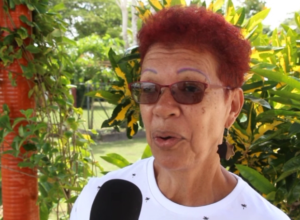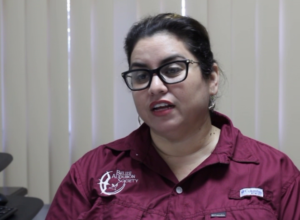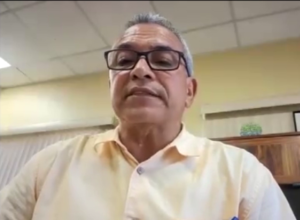Living With the Wetland in Crooked Tree Village
World Wetland Day 2024 will be celebrated on Friday February second, under the theme, “Wetlands and Human Wellbeing”. The day marks the anniversary of the adoption of the Ramsar Convention on Wetlands in 1971. Belize is a signatory of the international treaty that recognizes wetlands of international importance. So, tonight’s Belize On Reel takes us to the Crooked Tree Wildlife Sanctuary, one of the two protected wetland in the country. We sought to find out how this wetland is contributing to the wellbeing of Crooked Tree villagers through various conservation efforts. News Five’s Paul Lopez reports.
Paul Lopez, Reporting
The Crooked Tree Wildlife Sanctuary is recognized as a Wetland of International Importance or a Ramsar Site. This protected area consists of over fourteen thousand acres of waterways, logwood swamps and lagoon. This wetland provides a habitat for over three hundred species of resident and migratory birds. It is also home to other wildlife, such as fish, snakes, turtles and frogs. This protected area borders one of the oldest Creole communities in the country, Crooked Tree Village. And, to ensure the viability of this important ecosystem, residents must learn how to make use of its resources sustainably.

Verna Samuels
Verna Samuels, Co-Owner, Bird Eye View Lodge
“Every Sunday I could recall as a child my dad use to go out. We never use to go to the store to buy chicken. My dad use to go and kill a bird and that is what we would eat on Sundays.”

Verna Samuels is the co-Owner of Bird’s Eye View Lodge, an accommodation in the village that provides overnight stays, tours of the lagoon, and birdwatching expeditions for tourists. Born and raised in Crooked Tree, she recalls her father hunting the Limpkin birds, also known as the crying birds. That culture of hunting birds for food has become practically nonexistent in the community. Amanda Acosta, the Executive Director at Belize Audubon Society, and her team, have led the charge in providing public awareness to residents about the importance of this wetland and its wildlife.

Amanda Acosta
Amanda Acosta, Executive Director, Belize Audubon Society
“In the eighties when it was designated, it was designated as a wildlife sanctuary. By law wildlife sanctuary does not allow for extraction. Unfortunately that does not recognize the traditional uses within the community. That community has always fished. So it was areas of contention, contention build up, it came to a head and we were forced to go to the drawing board with the community and government.”

Derrick Hendy is the Site Manager at the Crooked Tree Wildlife Sanctuary for the Belize Audubon Society. Hendy understands the traditional significance of this wetland to villagers. He works with residents and schools in surrounding communities to provide education on this habitat.

Derrick Hendy
Derrick Hendy, Site Manager, Crooked Tree Wildlife Sanctuary
“People use it for food. Everytime when it filters out people will catch the fish and sell it. But as I said, there are rules and regulations, people really don’t want to follow the rules and regulations. And, if we continue that way, we will eventually contaminate all of our waterways and it will be much more expenses for us to maintain and even to get drinking water.”

The Crooked Tree Wildlife Sanctuary acts as a catchment area for the Belize River that flows from west of the country to the east and into the Caribbean Sea. The water that flows into this wetland goes through a natural filtration process, removing excess contaminants, before flowing back out into the river. Water levels vary throughout the year, as a result. But, apart from its value to wildlife and naturally purified water, the sanctuary attracts tourism capital for residents.

Amanda Acosta
“Bird tourism is actually one of the main driving tourism reasons for that community. It is what people go there for. If there is no fish, there won’t be any birds, because that is the food for the birds, because that is one of the reasons why birds go there as well. So they are all tightly interwoven as one needs the other.”
 Verna Samuels
Verna Samuels
“The Wetland is what causes the birds, not only the birds, all of the wildlife to be here. Then, in turn that brings the tourists who are bird lovers, nature lovers, so it is like a cycle that if the wetland is here, the birds are here, the wildlife is here, and that attract the business that we want to attract, the tourist.”

At the government level, policies have been developed to govern protected areas that are also traditionally used by surrounding communities, like the Crooked Tree Wildlife Sanctuary. Whereas most protected areas fall under what is termed as a “classification one” or a “no-take zone”, Orlando Habet, the Minister of Sustainable Development, explained that given the circumstances, the Crooked Tree Wildlife Sanctuary falls under what is known as “classification two”. This permits certain traditional activities.

Orlando Habet
Orlando Habet, Minister of Sustainable Development
“We have to understand and realize that their communities that are built around these protected areas and people will have to have their livelihoods, and they will have to fish, hunt and harvest some medicinal plants and do a bit of farming. But, we work alongside them so that all of this can be done sustainably so that it is there for many generations to come. The good thing with the community is that they have realized this also, so they want to do the protection and they want to have their children and grandchildren and future generation to be able to enjoy what is there now and hopefully they can protect it and conserve it in a way that they can use some now and use for the generations to come in their livelihood.”
Reporting for News Five, I am Paul Lopez.







Facebook Comments